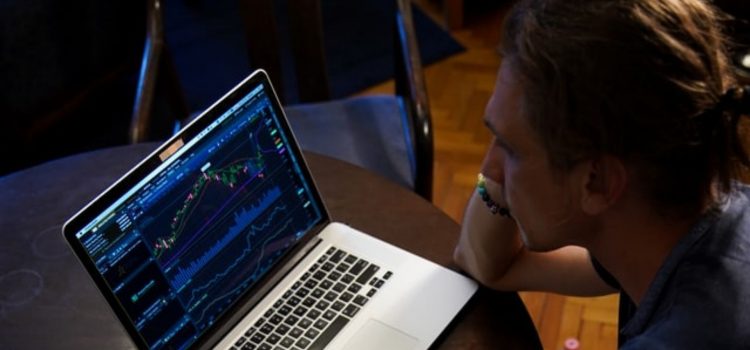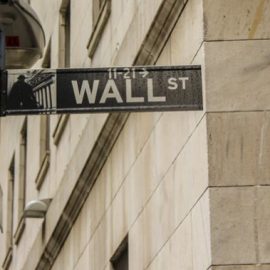

This article is an excerpt from the Shortform book guide to "Flash Boys" by Michael Lewis. Shortform has the world's best summaries and analyses of books you should be reading.
Like this article? Sign up for a free trial here .
Is it safe to invest in the stock market? Does high-frequency trading make it unsafe?
High-frequency (HF) traders aren’t going anywhere anytime soon, but don’t make the mistake of getting caught up with them. HF traders ultimately caused the stock market crash of 2010 and practicing high-frequency trading can get you into legal trouble. That being said, if you play the game of trading fairly, it’s safe to invest in the stock market.
Here’s why you should steer clear of high-frequency trading if you want to safely invest in the stock market, and how Wall Street firms might have a powerful advantage over you.
Introduction to High-Frequency Trading
So, is it safe to invest in the stock market? There’s not a definite answer, but high-frequency trading is still a popular method traders use, so it’s certainly not a fair game. Lewis describes high-frequency trading (HFT) as a type of electronic trading platform that uses automated computer algorithms to very quickly buy and sell large quantities of stocks. High-frequency (HF) traders and firms own these high-powered computers and algorithms. These HFT algorithms gather market data and use this information to buy and sell stocks, completing this process in microseconds, or one-millionth of a second, thus using a different strategy than long-term buy-and-hold investing positions. This speed advantage makes HFT algorithms faster than any human trader, giving them a powerful edge by enabling them to accrue billions of dollars in tiny profits from HFT trades that traditional investors and traders can’t.
How Wall Street Responded to HFT
If you’re wondering if it’s safe to invest in the stock market, you’re probably looking for answers from Wall Street firms. However, Wall Street firms were once using HFT techniques to take advantage of their smaller investors. Lewis argues that the Wall Street firms and banks, who were supposed to help investors, adopted HFT techniques despite knowing that HFT made trading unfair for average investors. They did this because they were making so much money. One firm made over a billion dollars in one year from its HFT department alone.
(Shortform note: Lewis is no stranger to exposing Wall Street’s greed: In The Big Short, he argues that greed and short-sightedness were the prime drivers of the financial crisis. All major stakeholders in the ecosystem were fueled by the desire for profit, which made it easy to overlook the other systemic problems below, as he similarly argues about HFT.)
You might be responsible when buying and selling stocks, but you’re still at risk of Wall Street winning over you. If you want know if it’s safe to invest in the stock market, your answer may lie with the three ways investment firms and banks are taking advantage of regular investors: trading against customers, manipulating dark pool orders, and selling access to dark pools.
Trading Against Customers
Lewis asserts that in response to HFT, Wall Street banks used proprietary trading (or “prop trading”) to trade against their customers in their dark pools, thus committing their own form of dark-pool arbitrage. Like HF traders, the banks’ prop traders—traders who work on behalf of the bank instead of on behalf of customers—used dark pools to see customer orders, buy stocks on other exchanges, and sell that stock at a higher price to the customer in the dark pool. Thus, rather than trying to fix the problems caused by HFT, the banks made the problem worse by participating in the behavior that harmed their own customers.
Manipulating Dark Pool Orders
Wall Street also took advantage of the dark pool arbitrage that doesn’t make it safe to invest in the stock market for regular investors. When sending an order to a bank and its dark pool, the investor had to trust that the broker (and the bank the broker works for) acted in her best interest. But Lewis believes the banks often didn’t act in her best interest—sometimes, instead of sending her order on to other exchanges where it could be executed, the bank would leave the order in its own dark pool, unfulfilled. So a customer’s order to buy Microsoft stock might sit in a bank’s dark pool, waiting to be paired with a seller’s order to sell Microsoft stock. If a seller never enters the dark pool, the buy order would never be completed.
Lewis explains that banks sometimes wouldn’t send on customers’ orders because (1) they made commissions and avoided public exchange fees when they completed orders in their own dark pools, and (2) they wanted to make their dark pool statistics look good because they could then use their good dark pool statistics to advertise to outside investors that they were a good bank to trade with.
Selling Dark Pool Access
Banks also made money from selling access to their dark pool to HF traders, despite telling their customers dark pools were safe from HFT. Lewis explains that HF traders were willing to buy access because they could commit dark pool arbitrage, which generates more than a billion dollars a year. Selling dark pool access benefitted both HF traders and the firm at the expense of the individual investor, who (by nature of a dark pool) had no idea how the private trading worked.
So, when banks boasted that they had a large number of trades executed within their dark pool, the high number of transactions was often due to HF traders exploiting investors, which makes it unsafe to invest in the stock market.
The 2010 Flash Crash
After years of unregulated high-frequency trading, Wall Street experienced a “flash crash” in 2010. Lewis defines a flash crash as a stock market crash that happens quickly—stock prices drop dramatically before recovering within a few minutes. But during that time, 20,000 stocks traded at dramatically different stock values.
According to Lewis, no one could pinpoint a reason behind the flash crash. Katsuyama couldn’t access the data that could prove HFT caused the crash, since this information wasn’t public—it belonged to the HFT firms and exchanges—but he knew that the flash crash was a result of HFT.
The flash crash marked a turning point in the investing world. Investors were interested in what was going on in the market—and why it had dropped by 600 points so suddenly. More importantly, it sparked a conversation about whether it is safe to invest in the stock market.

———End of Preview———
Like what you just read? Read the rest of the world's best book summary and analysis of Michael Lewis's "Flash Boys" at Shortform .
Here's what you'll find in our full Flash Boys summary :
- Why high-frequency trading (HFT) is a threat to your investments
- A look at Wall Street’s greedy response to HFT
- How Canadian trader Brad Katsuyama tried to fight the problem






